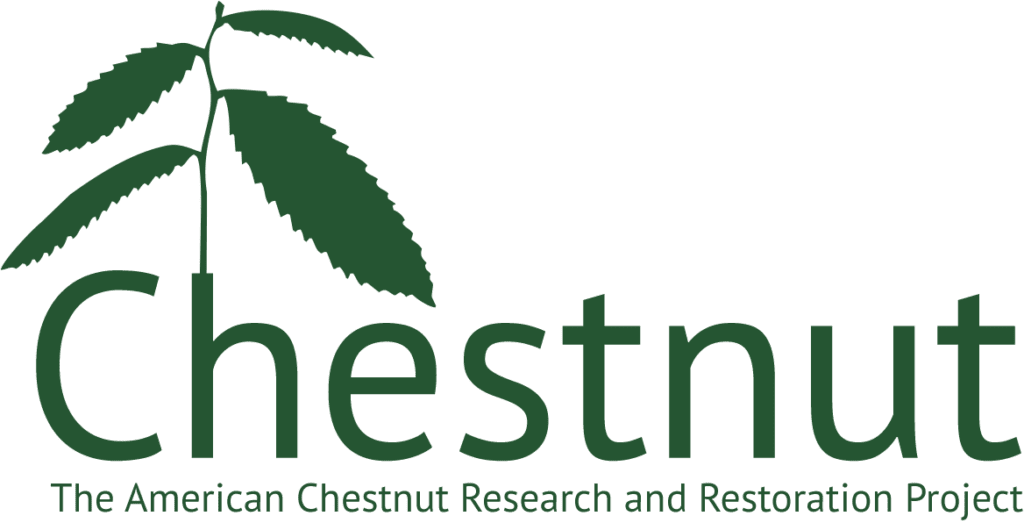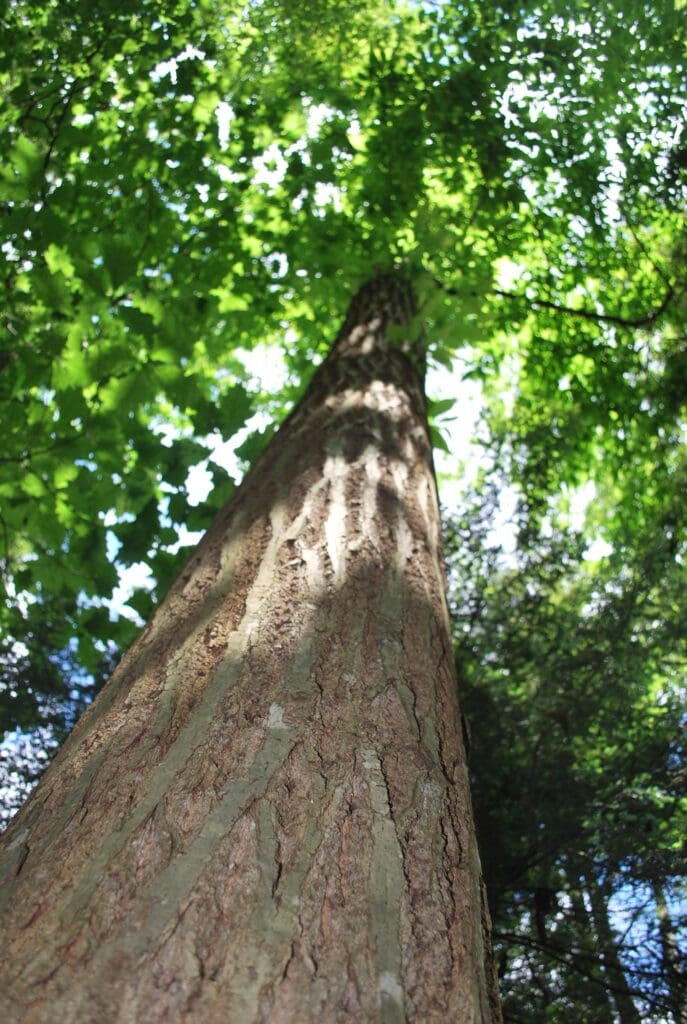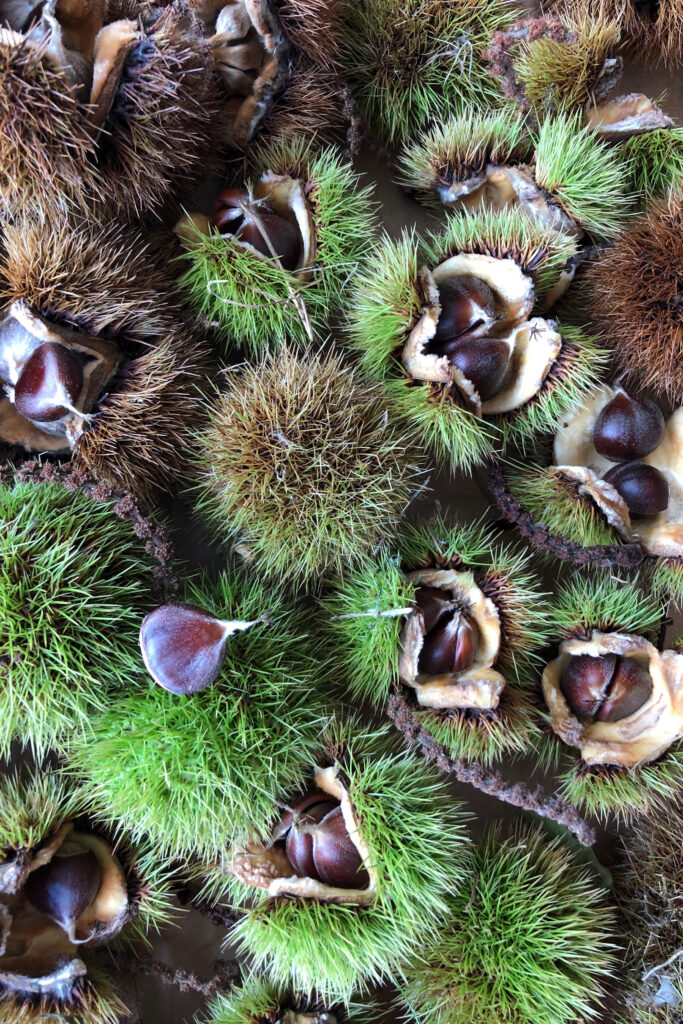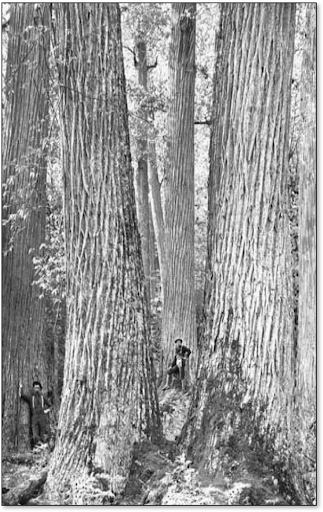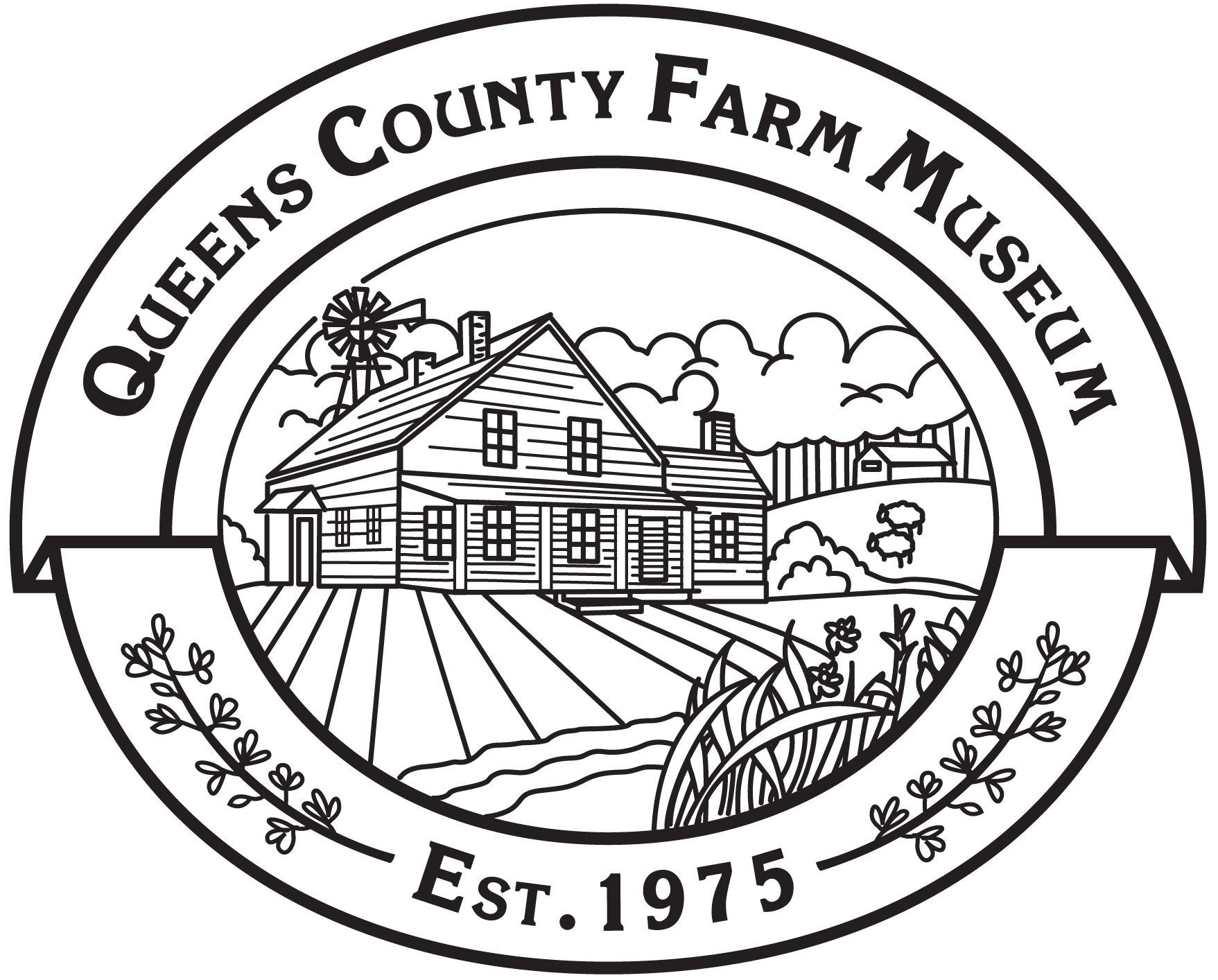American Chestnuts
Queens County Farm Museum is proud to participate in research efforts for American Chestnut forest restoration and the development of blight-resistant trees! Our demonstration orchard of pure American Chestnut trees can be found along Little Neck Parkway, adjacent to the apple orchard.
The American chestnut is a majestic hardwood tree native to eastern North America. Once one of the largest tree species in the eastern forests of North America, the American chestnut could reach towering heights in the forest canopy. The largest of these trees could reach 100 feet in height and have trunks 6 feet in diameter. It was also incredibly abundant. In some places, one out of every four trees in the forest was an American chestnut.
It was a tree of tremendous ecological, cultural, and economic importance. Both wildlife and people made use of the resources the tree offered, which included a bountiful crop of nutritious nuts and durable, rot-resistant wood. Wildlife such as bears, deer, and turkey relied on the annual mast of nuts for food. People sold the nuts and used the wood to make everything from cradles to coffins.
In the late 1800s, an invasive fungus was accidentally introduced to New York on trees imported from Asia. The fungal blight moved quickly, killing billions of chestnut trees in approximately 200 million acres of forest. By 1950, the American chestnut was eliminated as a canopy tree.
Today, the tree is considered to be functionally extinct. Sprouts often emerge from the stumps of chestnuts, but these often succumb to the blight before they can produce nuts. The blight fungus survives on related species of trees, such as oaks, so it is still present in our forests.
Several solutions to save and restore the American chestnut have been explored over the years. These include cutting down infected trees, spreading a virus that attacks the fungus, using fungicide, exposing chestnut seeds to radiation, and producing a hybrid chestnut that combines the blight resistance of the Chinese chestnut with the physical traits of the American chestnut.
Today, scientists promote American chestnut restoration using biotechnology, along with a variety of other methods. The American Chestnut Research and Restoration Project at the SUNY College of Environmental Science and Forestry (ESF) are working to develop an American chestnut with enhanced blight tolerance through genetic engineering. The American Chestnut Foundation (TACF) and passionate groups of volunteers and professionals are also working to bring back this iconic tree.
Queens County Farm Museum’s American chestnuts were donated by ESF. These trees are part of a broad effort to restore the American chestnut to American forests. The chestnuts at Queens Farm have no resistance to the blight, but they still serve an important purpose for education, and to keep the American chestnut on the landscape to help with ongoing research and conservation. You can find them adjacent to the orchard on the Northeast side of the farm.
